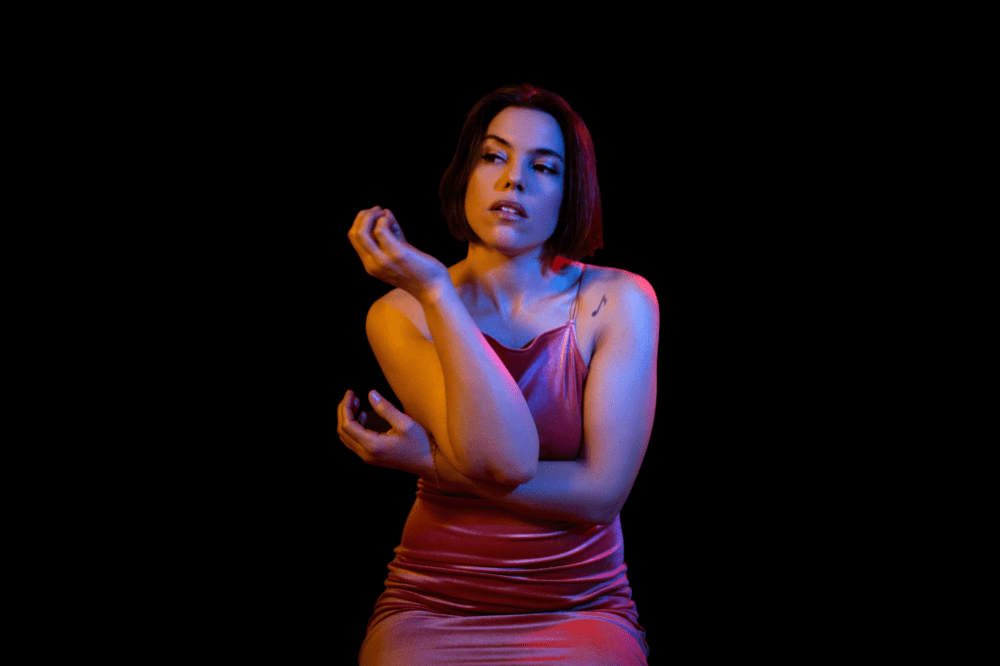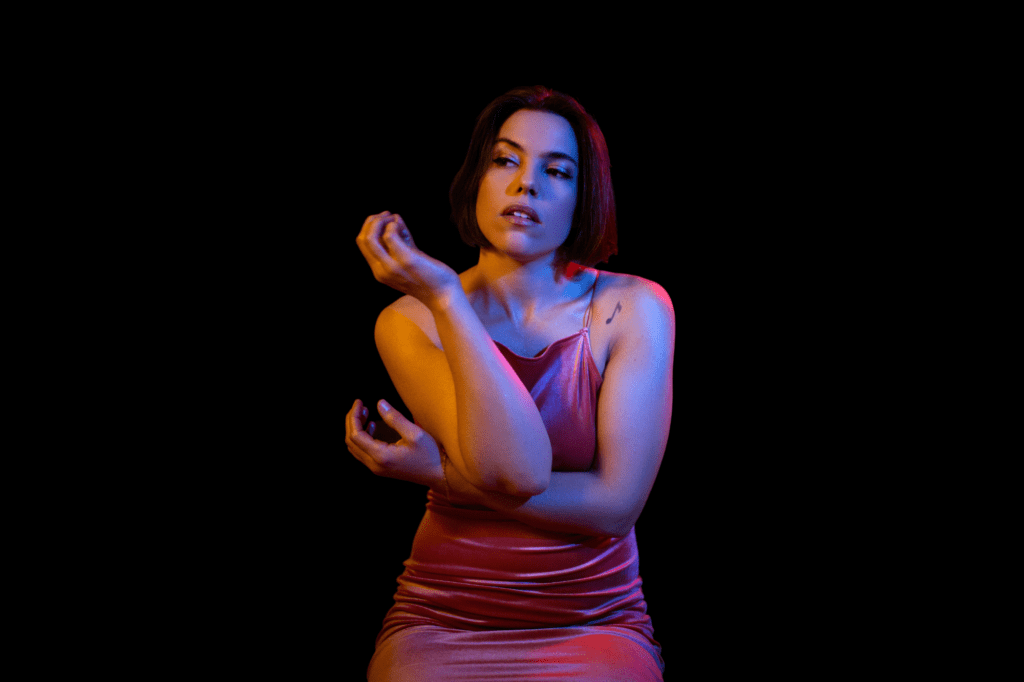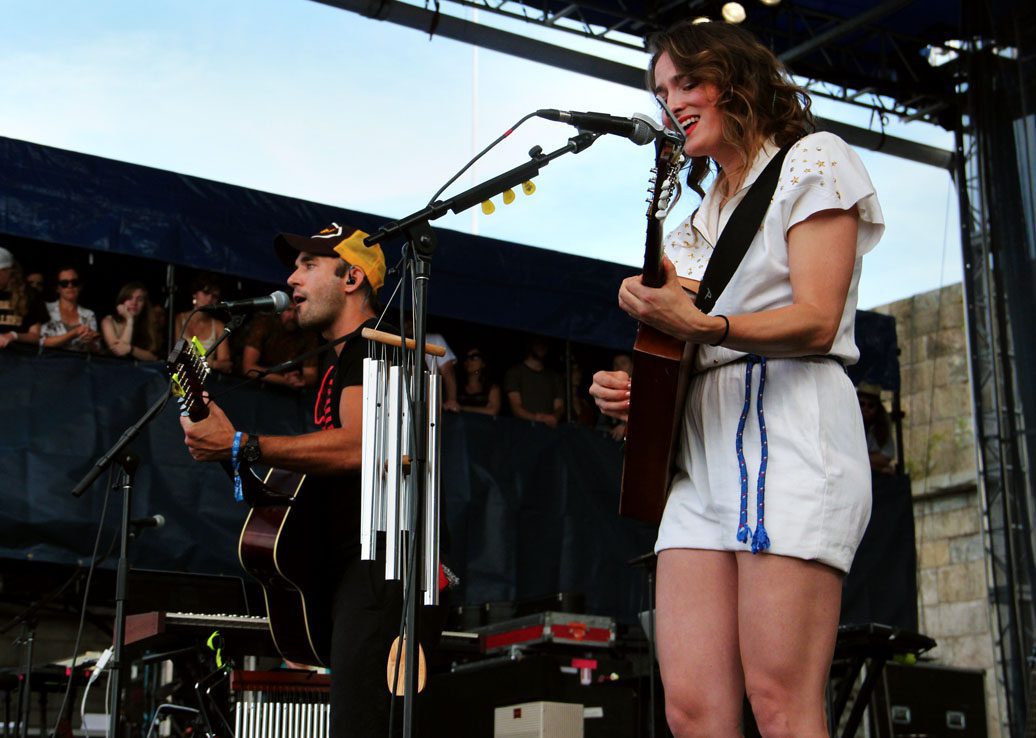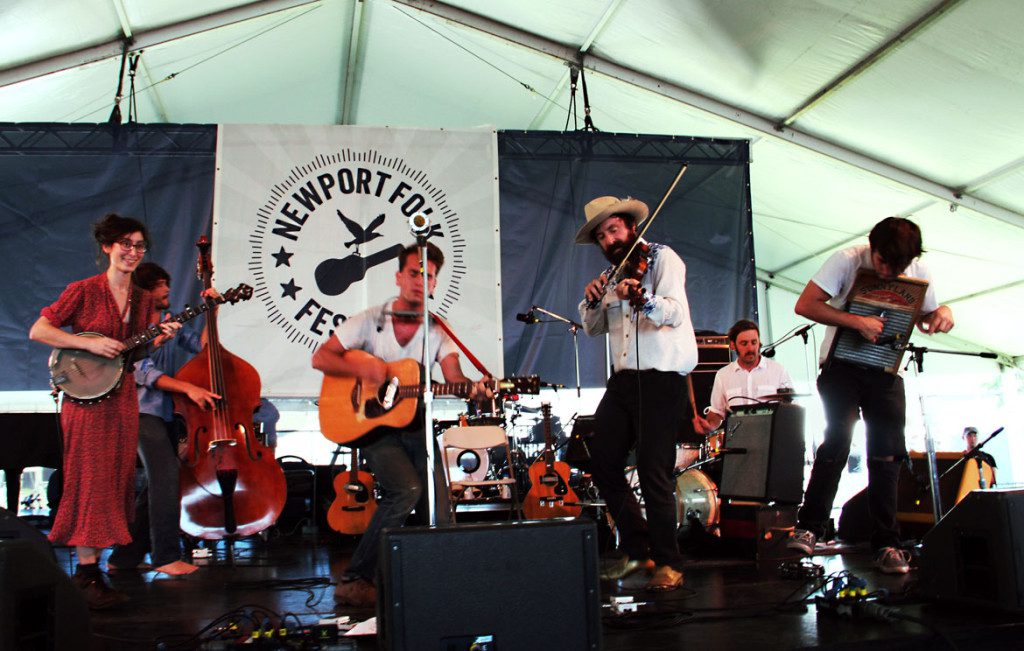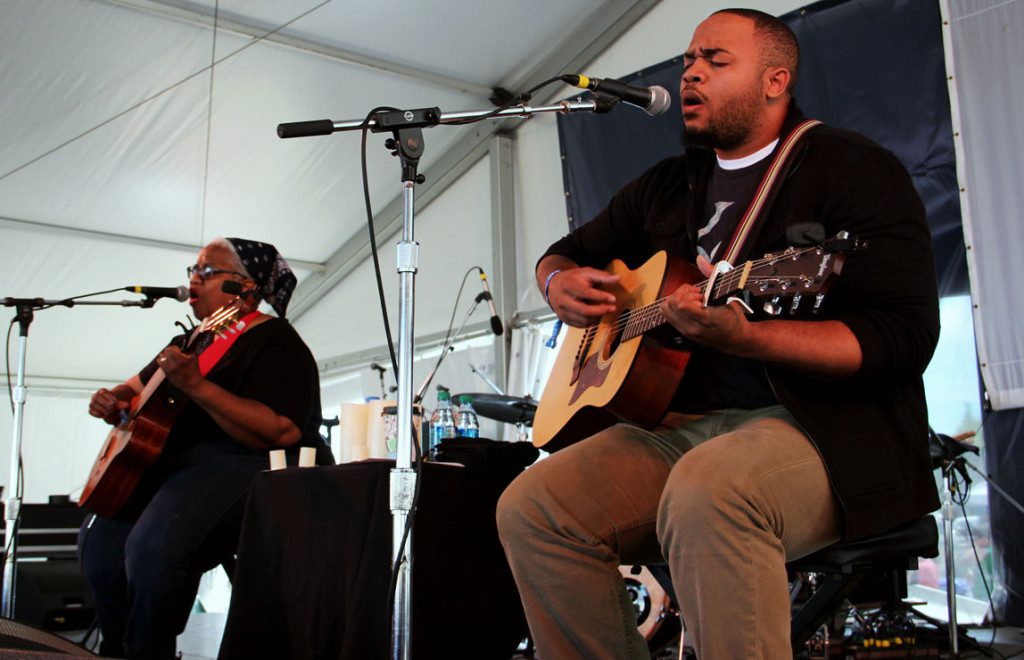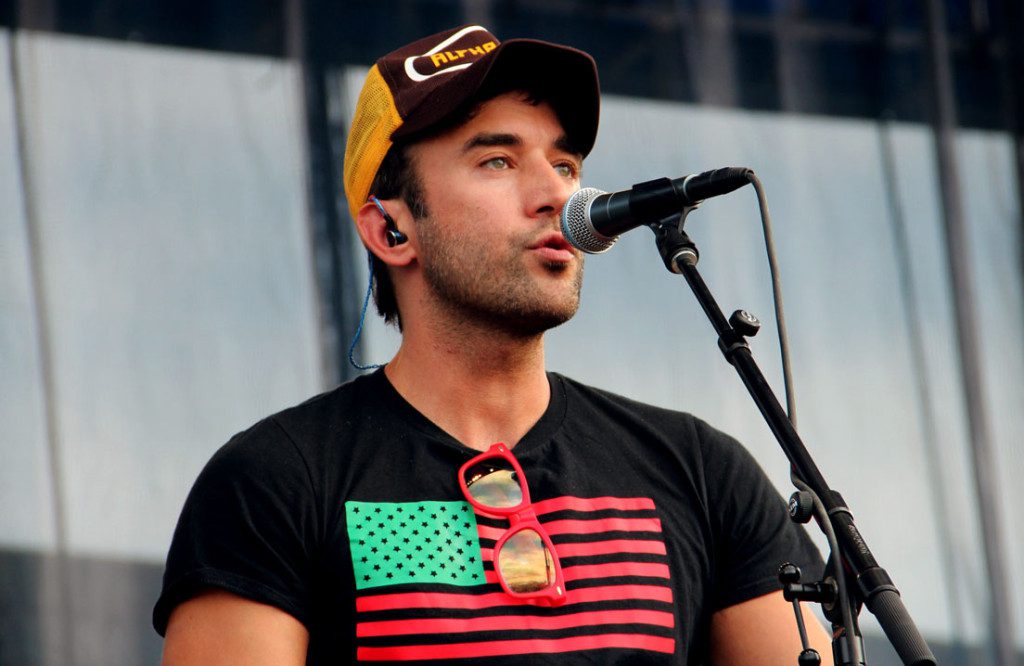Harmony on the Horizon Aims to Elevate Humanity With Early Voting Concert Series
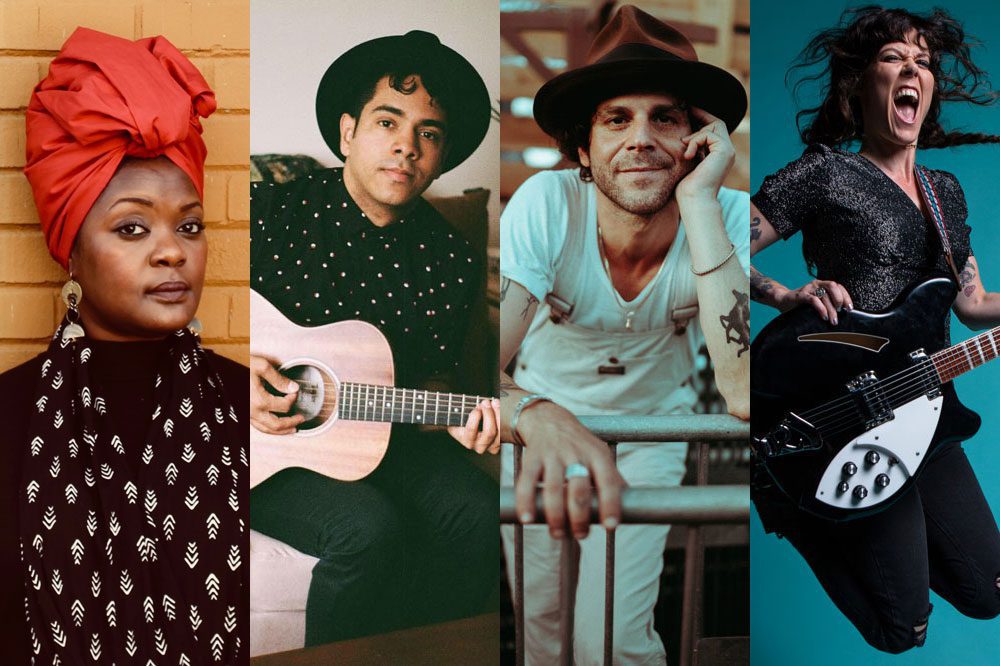
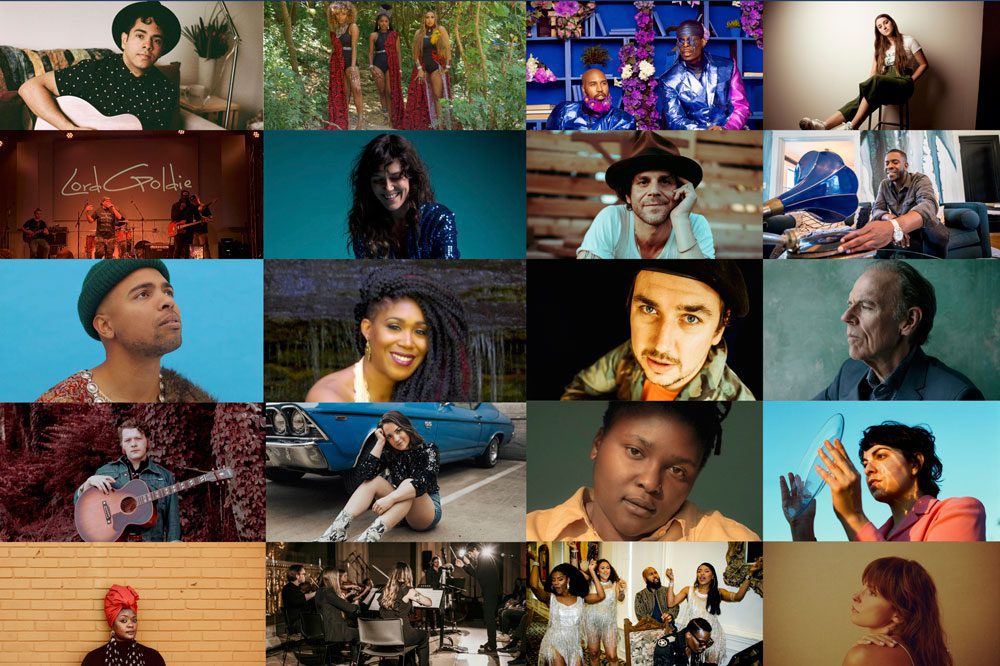
While voting is a key component of the Harmony on the Horizon Early Vote Concert Series, orchestrated by Tennessee-based civic participation organization BriteHeart and music incubator nonprofit This Is Noteworthy, it’s merely one part of the overarching message the series aims to instill in viewers: your voice matters.
This Is Noteworthy Founder and Chief Strategist of Community Development at BriteHeart Becca Finley is the visionary behind the series, born out of the original Harmony on the Horizon series that sees artists performing a virtual show from the comfort of their homes. Like many others around the world this year, Finley watched as people flooded the streets to make their voices heard. She took her own form of action by creating the musical narrative series filmed at The Caverns, a cave system-turned-renowned-concert-venue in rural East Tennessee, non-audience and socially distanced over three nights. With Go To Team Production behind the camera and a team of volunteers helping to coordinate the production, 18 musical acts all donated their time and talents to the cause that elevates stories through music and art.
My own role as part of the production and promotions team for the series provided exclusive insight into the vision and purpose behind the series; I worked alongside Finley to coordinate efforts behind-the-scenes for production, in addition to engaging in media outreach. But I also wanted to explore the creative side of this series, and what it means to trust in someone’s vision to create beauty and compromise, which in a way reflects our democracy. So I chatted with several artists and organizers to report the full scope of the poignant series.
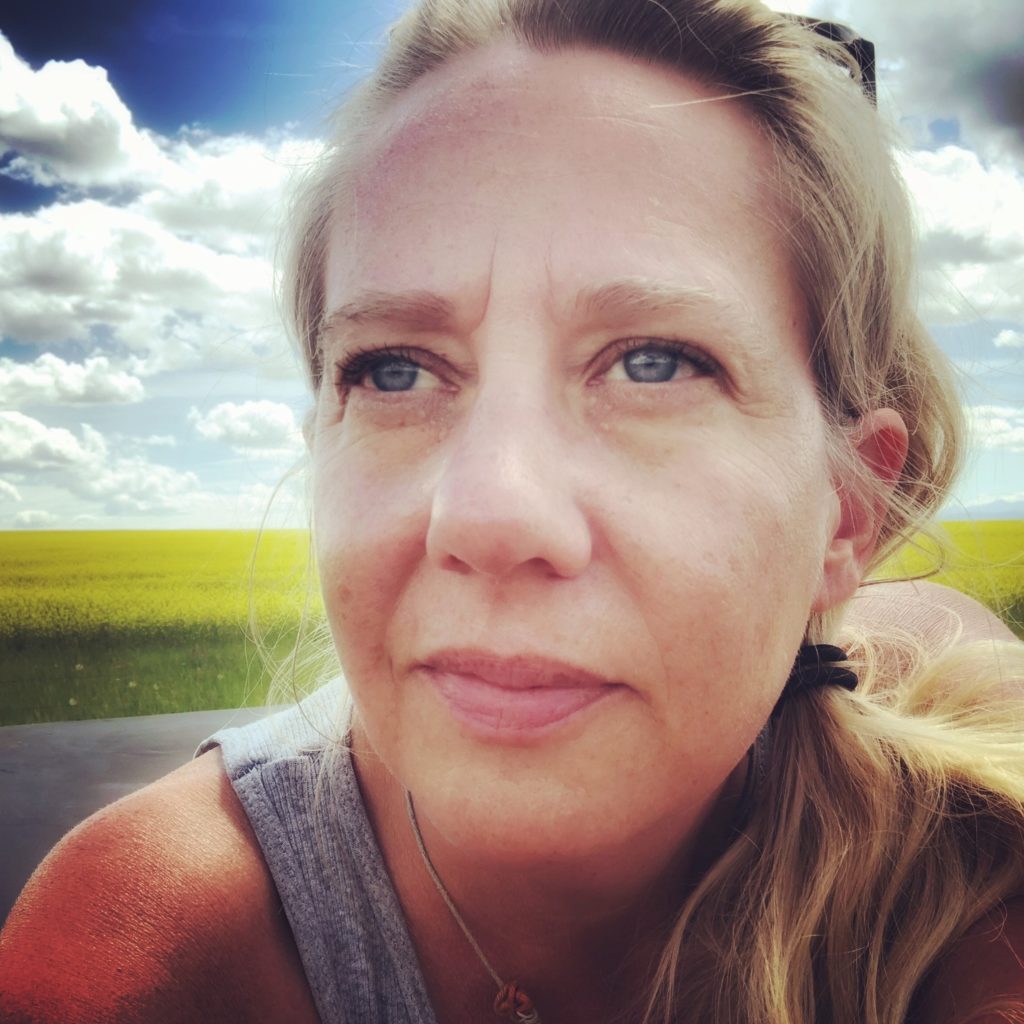
Finley, who also directed and edited all of the shows, says the concept behind the Early Vote series evolved from a series of questions: “How can we put all the stories together in one place that protects and honors each one of the stories as individual stories that deserve to be heard? When we put them all together, how do we have one story that everyone can relate to in some way?” This was no small task, considering that the series features artists as diverse as Langhorne Slim, Lilly Hiatt, Kyshona Armstrong and Louis York. “You visually see a lot of different people who have a lot of different stories, but they are underlying, and they’re all people who live in and love our country,” Finley explains.
Described by BriteHeart Founder and Chairman Chase Cole as “the box set of all civic concert events,” he says the meaningful concept only furthers the organization’s purpose in being a civic motivator. “BriteHeart’s mission is to use the arts to increase civic participation. This series is the ultimate embodiment of that goal,” Cole expresses. “We’ve gathered diverse musical voices to speak their truths to a broad group of viewers who we hope will be inspired to vote and remain active in their community.”
The invisible thread that binds each component of the series is intentionality, beginning with Finley’s request that each artist submit ten original songs that she then turned into sets of six songs, each harboring a unique story that connects to the show before and after it, creating a metaphorical book of our nation. “It was a feeling,” Finley says of what drove the song selection process. “It’s really sitting with all of the music. It’s taking the time to first listen and feel it and then going through and really reading the lyrics and dissecting those; what was going to honor all of these people and these two organizations who dedicate themselves to civic engagement and to the overall health of the music ecosystem and how does all of it fit together.”
The series, which airs each night of early voting in Tennessee along with a pre-election show on November 2, launched on October 14 with a stirring performance by Armstrong, “the warrior who’s going to fight and stand up,” as Finley describes, followed by Gustavo Guerrero, a native of Honduras who shares his story as an immigrant in the United States, one who loves his native land as much as he does the one he now calls home. The genre-spanning lineup also features Lord Goldie, a Nashville native making honest hip-hop music in the country music capital of the world, her songs ranging from the forewarning “Icaraus” to a letter she wrote to her late father who passed away when she was 14; Becca Mancari, a rising force in the Americana and roots music world who turns her experience as a gay woman into soul-searching lyrics; and Mel Washington, who speaks candidly about racial inequality in America and his experience being homeless, simultaneously staring his obstacles in the face with the motivational mantra, “fail forward.”
These voices represent the genuine diversity at our nation’s core, a crucial element that compelled The Shindellas to sign their names to the series. The Nashville-based trio of Kasi Jones, Stacy Johnson and Tamara Chauniece, who will perform on the grand finale with their Weirdo Workshop counterparts Louis York on November 2, felt a sense of gratitude being part of the all-encompassing lineup. “[It’s] a story of empowerment,” Jones says on behalf of The Shindellas. “Seeing all of these different faces, but everyone has the same common theme of healing and community, it’s really empowering. It makes you feel like the world is presented as so crazy and chaotic, but when you look at these people here around us, they all have something in common as we do.”
The music is set against the equally awe-inspiring backdrop of The Caverns, the pure-spirited cause aligning with the meaning of the Sequoyah Cherokee script that The Caverns owner Todd Mayo had etched onto the cave doors: “Welcome to The Caverns where the great spirit brings all people together through music.” As a lifelong Tennessean, Mayo was inspired by the nonpartisan effort to motivate his fellow citizens to vote, which he cites as “one of the most American things you can do.” “America contains multitudes,” Mayo says, quoting Walt Whitman in reference to the series’ diversity. “I think that was celebrated on the Harmony on the Horizon series in all of those ways, and that’s really what I like, where I think the Harmony on the Horizon what they’re doing and what we’re doing at The Caverns, those entwined very easily together.”
Viewers will notice that in between songs, the artists share heartfelt reflections on a range of topics, some speaking about marginalized voices while others address mental health and unity. Prior to filming, the artists were posed with a series of questions inspired by their art, appearing strategically in the set as a compelling link between the songs and larger vision of the series. For SUSTO, his thesis statement centered around finding common ground with those who have differing viewpoints. The Charleston-based indie rock artist, who is a board member of This Is Noteworthy and one of the beneficiaries of the nonprofit’s healthcare grant initiative for touring musicians, notes that the marriage between the songs and the questions encouraged him to go inward, becoming “re-inspired” by his own work in the process. “That definitely lended for some deeper self reflection, and also figuring out what my piece is in all of this big drama of human existence, specifically here, at this moment in our country and what we’re trying to accomplish,” he says.
Like Mayo and The Shindellas, SUSTO was also inspired by the diverse lineup and honored to represent one piece in this “mosaic of stories.” “I think seeing that kind of variety in the artists speaks a little bit to what the democratic process is about,” he continues. “It’s hearing a bunch of different voices with different stories from different backgrounds come together in unity and sometimes agreeing to disagree, that’s part of it, and then sometimes just learning from each other. Being a part of this…I felt like a participant in something bigger.”
Oftentimes, being a part of something bigger than oneself involves trust, and epiphany that R&B soul singer Larysa Jaye let guide her through the atypical set and corresponding questions, aligning with the vision when she realized the connection between the songs and reflection points. “I was thinking how we need to have so much more grace and compassion and empathy for each other,” she says. “I think we can be so hard on each other a lot without knowing people, what they’re going through, what their background is, their mindset. We don’t have enough grace for other people to even have conversation.” Sharing these messages she in her show, she adds, “It’s important to keep conversations going, that’s how you grow. Each of our stories create who we are collectively. We all shape each other’s worlds and that’s why it’s so important for people to vote because if only one portion or one demographic is voting, your government’s not going to reflect your world.”
The Shindellas, too, felt they’d become part of a grander mission as they stood on stage in the center of the earth, beginning their set with songs of self-acceptance and community and ending with the proclamation that loving oneself without fear enables us to embrace one another and become a unified force. And when Finley concluded the set by inquiring about their thoughts regarding the intention behind the event, they realized the magnitude of what they are a part of. “Somebody actually asking me these very specific, deep questions, you have to put your thoughts to it and have an opinion and really use your voice, and it is very humbling. You feel elemental or you feel like this communication is what we’re supposed to be doing,” says Jones, again speaking on behalf of The Shindellas. “Because there’s so much representation and people are being asked questions that when you answer, you can’t really answer without a point of view, you can’t be neutral on the questions that we got asked. So in that way it reflects democracy, in that all voices are being heard. The concerts were set up saying, your songs matter, all that matters, but your voice matters.”
The message of “your voice matters” is the beating heart of what this series represents – a timeless message that remains true long after the election cycle is over and encapsulates the profound element that unites us all: humanity. “What matters is the process. What matters is that we all chose to show up for each other. What matters is that we cared enough about our country and people’s voices to represent them and try,” Finley proclaims.
“I feel like on the whole, we want to be led and represented by people who care about us, by people who want to serve us, or people who have our personal best intentions, but also the best intentions of our nation at heart. I feel like this process was an exercise in that. It’s an exercise in leading and in compromising and paying attention and working together with all of us, with our democracy…It’s about using our voice. It’s taking the time to listen and figure out for yourself what is the story that each one of these people is telling and what is that thread. But I think if you really go through it, the thread for me that connects them all, it’s love of our country, but it’s the belief in humanity and it is that we’re all curious, and when we take the time, we all have the ability to listen and to be compassionate. And if we are willing to remove our ego,” Finley concludes, “then we have the ability to empathize and recognize a piece of ourselves in every other story.”
Watch the Harmony on the Horizon Early Vote Concert Series now via BriteHeart Live on YouTube. Donations are being collected for the artists through This Is Noteworthy’s PayPal Giving Fund, with a portion of the proceeds also benefiting The Caverns and This Is Noteworthy’s artist grants program.

